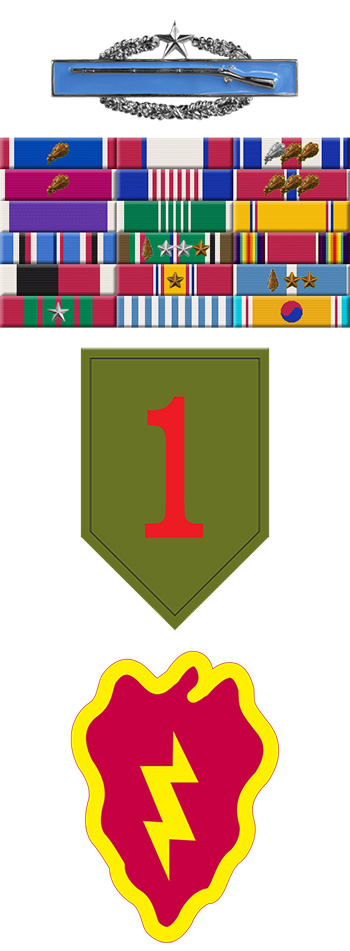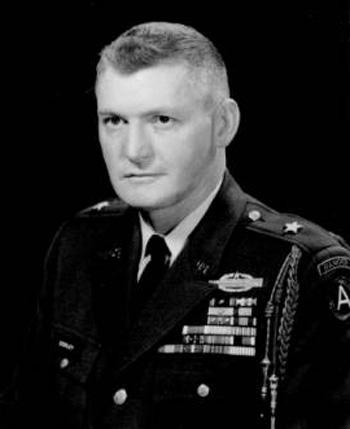
|
John T. Corley |
 |
|||
| Rank, Service | ||||
Brigadier General O-7, U.S. Army |
||||
| Veteran of: | ||||
|
||||
| Tribute: | ||||
John Corley was born on August 4, 1914, in Brooklyn, New York. He entered the U.S. Military Academy at West Point on July 2, 1934, and was commissioned a 2LT of Infantry on June 14, 1938. LT Corley next attended Air Corps Primary Flying School before being reassigned to the Infantry in November 1938, and then served as a Company Commander and Battalion Executive Officer for several units before becoming Executive Officer of 3rd Battalion, 26th Infantry Regiment of the 1st Infantry Division at Indiantown Gap Military Reservation, Pennsylvania, in July 1942. He deployed with his unit to England in August 1942, and participated in the invasion of French North Africa during Operation Torch in November 1942, the Tunisian Campaign from January to May 1943, and the Invasion of Sicily in July 1943. During this time he was made Battalion Commander of 3rd Battalion of the 26th Infantry Regiment in March 1943. LTC Corley led the 3rd Battalion during the Normandy Invasion in June 1944, and across Europe to Germany, participating in the Battle of the Bulge in December 1944 and January 1945. He remained on Occupation Duty in Germany after the war until February 1946, when he went to West Point to serve on the staff at the U.S. Military Academy. LTC Corley attended Command and General Staff College at Fort Leavenworth, Kansas, from August 1947 to August 1948, and then served as Chief of the Plans and Operations Division with Headquaters 1st Army at Fort Jay, Governors Island, New York, from August 1948 to August 1950. COL Corley then served as Commander of 3rd Battalion, 24th Infantry Regiment of the 25th Infantry Division in South Korea from August to September 1950, and then as Commander of the 24th Infantry Regiment from September 1950 to February 1951. After recuperation from his injuries in Korea, he served on the staff of the Office of the Chief Army Field Forces at Fort Monroe, Virginia, from May 1951 to August 1953, followed by Army War College at Carlisle Barracks, Pennsylvania, from August 1953 to August 1954. He served on the staff of Headquarters 7th Army at Patch Barracks in Stuttgart-Vaihingen, West Germany, from August 1954 to August 1957, and then as the Director of the Ranger Department with the U.S. Army Infantry School at Fort Benning, Georgia, from August 1957 to July 1960. COL Corley next served as Deputy Chief of Staff with Headquarters U.S. Army Element, Supreme Headquarters Allied Powers Europe at Copenhagen, Denmark, from July 1960 to May 1962, followed by service as Assistant Division Commander of the 2nd Infantry Division at Fort Benning, Georgia, from June 1962 to May 1964. BG Corley served as Chief of Staff of 1st Army at Governors Island from June 1964 to to December 1965, and then as Deputy Commanding General, U.S. Army Training Center at Fort Jackson, South Carolina, from January to June 1966. He was treated at Walter Reed Army Medical Center in Washington, D.C., from June 1966 until his retirement from the Army on October 1, 1966. John T. Corley died on April 16, 1977, and was buried at Greenlawn Memorial Park in Columbia, South Carolina. |
||||
|
||||

